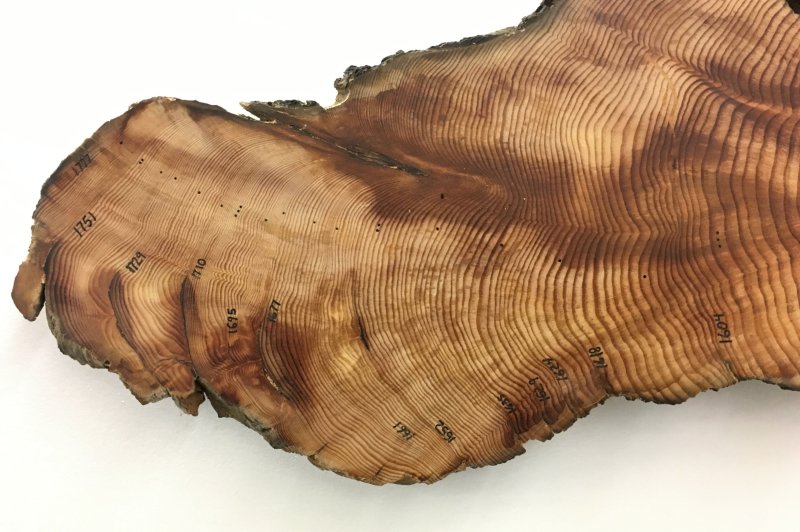Fire scars among the rings of a tree trunk helped researchers at Oregon State University understand the effects of fire suppression and drought on trees over a longer period of time. Photo courtesy of Oregon State University
Dec. 26 (UPI) -- Tree rings are giving scientists answers for how fire suppression has increased forest density and reduced their tolerances for droughts and wildfires, a study says.
Researchers at Oregon State University and Utah State University analyzed 2,800 hectares of mixed-conifer forest in central Oregon. Some of the ponderosa pines have inhabited the study area since before 1910 -- that's around the time when putting out forest fires became federal law.
"We wanted to document the trajectory of sensitivity to drought stress in response to progressively increasing fire deficits, and the threshold level of stand occupancy where decreasing resistance and resilience to drought stress, bark beetles and wildfire set in," Christopher Still, a researcher at OSU College of Forestry and study co-author, said in a news release. "This was an intersection of fire ecology and physiological ecology -- two areas that don't meet up as often as they should."
The study results, published this month in Global Change Biology, show that as tree stands got thicker over time, the trees pushed out more of the heavier stable isotope of carbon for photosynthesis. This brought on more drought stress by blocking the gases from reaching their leaves.
Researchers have conducted many studies in this area, which also contains grand firs that are both fire- and drought-intolerant.
The study suggests that even growing carbon dioxide levels like atmospheric CO2, which has risen by 40 percent since the beginning of the industrial age, won't help the trees fight back against the effects of forest density.
"We've known for a long time that fire suppression has led to crowded forests, which means more competition for resources," said Andrew Merschel, a graduate student at the College of Forestry and study co-author. "We've known that because of that, trees are more prone to drought, which makes sense -- there's less water reaching deep below ground and more trees pumping it out. Our research shows in a physiological way what's happening. We thought there would be signals in the annual tree rings, and there are."















